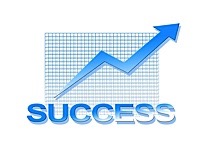 In the 2007 movie The Bucket List, corporate billionaire Edward Cole and working class mechanic Carter Chambers meet in hospital and decide to do the things they’ve always wanted to do before they die. So why not take the same approach to your business and prepare your own ‘Business Bucket List’ for 2011?
In the 2007 movie The Bucket List, corporate billionaire Edward Cole and working class mechanic Carter Chambers meet in hospital and decide to do the things they’ve always wanted to do before they die. So why not take the same approach to your business and prepare your own ‘Business Bucket List’ for 2011?
How many times have you heard people say, “I’ll wait for the economy to pick-up” or “I’m getting ready for the next big wave”?
If you only had a year to improve your business and get it running like a well-oiled, profit-making machine, would you sit and wait for the optimal external factors to arise?
So, why not make your ‘Business Bucket List’ now and see what you can achieve in 2011?
innovation DAILY
Here we highlight selected innovation related articles from around the world on a daily basis. These articles related to innovation and funding for innovative companies, and best practices for innovation based economic development.
Are You an Idea Addict?
 There are lots of things in this world people get addicted to: alcohol, nicotine, heroin, sex, and iPhones just to name a few.
There are lots of things in this world people get addicted to: alcohol, nicotine, heroin, sex, and iPhones just to name a few.
But perhaps the biggest addiction of them all is the addiction to our own ideas. Here's how it works:
We think something up. We feel a buzz. We tweak it, we name it, we pitch it, and POOF, the addiction begins.
At first, like most habits, it's a casual pursuit with a thousand positive side effects: increased energy, renewed focus, and a general feeling of well-being. Like wow, man. But then...
VCs Getting More Bang For Their Bucks In M&A
 The market for acquisitions is on the mend, as deal activity and dollars increased for the first time in two years. That’s a good sign for venture capitalists - but to truly capture whether these investors are benefiting we have to look at what they’re putting in versus what they’re getting out.
The market for acquisitions is on the mend, as deal activity and dollars increased for the first time in two years. That’s a good sign for venture capitalists - but to truly capture whether these investors are benefiting we have to look at what they’re putting in versus what they’re getting out.
Dow Jones VentureSource
Venture firms are generally secretive about their investment returns on individual deals, so it’s impossible to get a fully accurate picture for the industry. But we can get a rough idea as to how the returns might be trending by taking a look at how much venture capital start-ups raised relative to their acquisition prices.
The Valley Lacks Flexibility, Not Talent
 Right now there are a lot of reports about large companies in the Valley not being able to find the talent they need. There are also a lot of reports about companies bending over backwards financially to retain the people they have.
Right now there are a lot of reports about large companies in the Valley not being able to find the talent they need. There are also a lot of reports about companies bending over backwards financially to retain the people they have.
But what I found working for a large Valley corporate in the last few years is that it is not hard to find talent. The real problem is that companies are not ready for new talent. There is not enough flexibility in them to really embrace change and use creative, innovative and hungry developers to the best of their abilities. Companies want the new and cool, and then they try to force it to function just like the old and rusty. It's like trying to turn a 1980s Honda into a Hybrid with some batteries and duct tape.
Science Center’s QED Program Makes Third Round of Awards to Life Sciences Researchers
 PHILADELPHIA--(BUSINESS WIRE)--A revolutionary cancer therapy, a novel treatment for hepatitis C and a “molecular toll booth” to measure microRNA molecules were each awarded $200,000 from the University City Science Center’s QED Proof-of-Concept Program in January. The R&D funding includes $100,000 from the Science Center and a $100,000 match from each of the three supporting institutions: The Children’s Hospital of Philadelphia, Temple University and the University of Pennsylvania. In addition to the financial award, each of the three principal investigators will receive one year of continued business guidance to help them bring their technologies to market.
PHILADELPHIA--(BUSINESS WIRE)--A revolutionary cancer therapy, a novel treatment for hepatitis C and a “molecular toll booth” to measure microRNA molecules were each awarded $200,000 from the University City Science Center’s QED Proof-of-Concept Program in January. The R&D funding includes $100,000 from the Science Center and a $100,000 match from each of the three supporting institutions: The Children’s Hospital of Philadelphia, Temple University and the University of Pennsylvania. In addition to the financial award, each of the three principal investigators will receive one year of continued business guidance to help them bring their technologies to market.
Experimentation + Risk (+ Failure) = Improved Environment for Innovation
 Innovation rarely occurs by accident, but is the result of calculated effort, work and risk taking. In the face of failure, it requires one to try, try and try again.
Innovation rarely occurs by accident, but is the result of calculated effort, work and risk taking. In the face of failure, it requires one to try, try and try again.
Thomas Edison went back to the drawing board more than 6,000 times before finding the right material to create his incandescent light bulb.
Six thousand times. Do you have that kind of innovative stamina?
Innovation is an experiment of sorts. It requires a culture of risk, opportunity and challenge. Moreover, for an organization to benefit from innovation, leaders and team members alike must welcome - and grow from - failure.
Innovation can only be achieved by taking risks. It may mean failing more times than succeeding in order to reap the sweet fruits of your labor in the end.
Seven Characteristics of a Committed Entrepreneur
 We’ve all heard the old joke “In a bacon-and-egg breakfast, the chicken is involved, but the pig is committed.” This quote epitomizes the true essence of commitment. We all know at least one self-professed entrepreneur who claims to committed, but seems to treat it like a part-time hobby, won’t put any personal skin in the game, and is quick to give up when things are tough.
We’ve all heard the old joke “In a bacon-and-egg breakfast, the chicken is involved, but the pig is committed.” This quote epitomizes the true essence of commitment. We all know at least one self-professed entrepreneur who claims to committed, but seems to treat it like a part-time hobby, won’t put any personal skin in the game, and is quick to give up when things are tough.
There are no middle roads to real commitment, and if you are not ready to fully commit to all the rigors of a startup, you are better off sticking with your current role. For your calibration, here are some characteristics you will recognize in a truly committed entrepreneur:
How I Use Visualization to Drive Creativity
 Creativity. I’ve always believed it’s been one of the most important attributes of business success yet something very few business leaders talk about. So I thought I’d write a post about how I drive my personal creativity. (A slightly shorter version of this post originally appeared on TechCrunch)
Creativity. I’ve always believed it’s been one of the most important attributes of business success yet something very few business leaders talk about. So I thought I’d write a post about how I drive my personal creativity. (A slightly shorter version of this post originally appeared on TechCrunch)
As a practitioner of creativity rather than as an instructor of it I’m certain that there are many ways to get the creative juices flowing and how to release more creativity. The one that works best for me is visualization coupled with self talk.
Tech IPO Wave Coming, Says VC Who Lived Through The Last One
 Deepak Kamra has been a venture capitalist in Silicon Valley since the early 1990s, and he thinks tech is heading for the kind of IPO wave that hasn't been seen since the dot-com boom.
Deepak Kamra has been a venture capitalist in Silicon Valley since the early 1990s, and he thinks tech is heading for the kind of IPO wave that hasn't been seen since the dot-com boom.
"The question," he asks, "is whether we're in 1997 or 2000."
In December 1996, then-Fed chief Alan Greenspan warned of "irrational exuberance" and cautioned investors to look more closely at price-to-earnings ratios. In fact, the tech-heavy NASDAQ went up nearly 400% from that point, peaking in spring 2000. Investors who followed Greenspan's warning missed out on one the greatest stock market run-ups in history.
Fred Wilson on the differences between web investing and traditional venture
 On Saturday Fred Wilson wrote a post on the Union Squares blog announcing that they have added a new fund that will let them make larger investments (up to $25m). That is an interesting development in its own right, but more interesting to me was the way he describes the difference between investing in web services and other older venture capital categories:
On Saturday Fred Wilson wrote a post on the Union Squares blog announcing that they have added a new fund that will let them make larger investments (up to $25m). That is an interesting development in its own right, but more interesting to me was the way he describes the difference between investing in web services and other older venture capital categories:
Early on, we recognized that investing in web services was different than investing in chips, routers and enterprise software. The start-ups are more capital efficient. Differentiation is more about user experience than proprietary technology. Defensibility is more about network effects than patents.
Thailand launches effort to boost "creative economy"
 Thailand on Monday launched an effort to boost up its "creative economy"sector with an ambition of becoming a"creative industrial hub"in Southeast Asia.
Thailand on Monday launched an effort to boost up its "creative economy"sector with an ambition of becoming a"creative industrial hub"in Southeast Asia.
Deputy Commerce Minister Alongkorn Ponlaboot said the Thai government planned to spend 20 billion baht (667 million U.S. dollars) to raise contributions of creative economy to the country 's gross domestic product to 20 percent in 2012 from 12 percent in 2010.
The country also wanted to become a creative industrial hub of the 10-member Association of Southeast Asian Nations (ASEAN), to which Thailand is a member.
Steering Pills Safely
 Controlling a pill as it moves through a patient's body could let doctors deliver drugs to precisely the right location—for instance, a tumor in the colon.
Controlling a pill as it moves through a patient's body could let doctors deliver drugs to precisely the right location—for instance, a tumor in the colon.
Researchers at Brown University have now demonstrated a way to safely control a maneuverable pill and watch as it passes through the gastrointestinal tract.
Aside from looking for traces in a patient's bloodstream, it is hard for doctors to tell if a drug has been delivered properly. "You can take X-rays [of tagged pills], but you can never really know what time the drug was released," says Edith Mathiowitz, an associate professor of medical science and engineering at Brown University and principal investigator on the project. Mathiowitz's team, which focuses on creating better drug-delivery technologies, originally built a magnetic tracking system to observe pills as they pass through the body. But the researchers soon realized they could control the pills as well.
A Deep Bench of Leadership at Apple
 The sudden decision by the company’s chief executive to take a medical leave for the third time in less than a decade raises anxieties about the leadership of the company he helped found more than three decades ago. It also puts the spotlight again on several senior executives who have been helping Mr. Jobs run the company, in particular Timothy D. Cook, the chief operating officer, who will take over day-to-day operations during Mr. Jobs’s leave.
The sudden decision by the company’s chief executive to take a medical leave for the third time in less than a decade raises anxieties about the leadership of the company he helped found more than three decades ago. It also puts the spotlight again on several senior executives who have been helping Mr. Jobs run the company, in particular Timothy D. Cook, the chief operating officer, who will take over day-to-day operations during Mr. Jobs’s leave.
Whether Mr. Jobs returns, as he said he hoped to, or does not, as some investors fear, most experts believe that despite having a strong executive team, he will be hard to replace.
“The company could not thrive if Steve didn’t have an extremely talented team around him,” said David B. Yoffie, a professor at Harvard Business School who has studied the technology industry for decades. “But you can’t replace Steve on some levels.”
Robots..........Programmed for Love
 Imagine standing in front of a robot, gazing into its wide, plastic eyes, and falling in love. Your heart revs up, and you hope this Other—this humanoid machine—turns your way again, tilts its head in interest, likes you back.
Imagine standing in front of a robot, gazing into its wide, plastic eyes, and falling in love. Your heart revs up, and you hope this Other—this humanoid machine—turns your way again, tilts its head in interest, likes you back.
It happened one summer to Sherry Turkle, at a lab at the Massachusetts Institute of Technology, where she is a professor studying the impact of technology on society. She met a metallic robot named Cog—made to resemble a human, with moving arms and a head—which was programmed to turn toward whoever was speaking, suggesting that it understood what was being said. To Turkle's surprise, she found that she deeply wanted Cog to interact with her rather than with a colleague who was there that day. She realized this human-looking machine was tapping into a deep human desire to see it as alive—as good a companion as any human. She describes it almost like a schoolgirl crush.
New Hampshire's Sen.Shaheen pushes for SBIR reauthorization
 The federal Small Business Innovation Research program is once again facing possible extinction -- a fate New Hampshire U.S. Sen. Jeanne Shaheen has been working hard to prevent.
The federal Small Business Innovation Research program is once again facing possible extinction -- a fate New Hampshire U.S. Sen. Jeanne Shaheen has been working hard to prevent.
A stopgap measure last year temporarily saved SBIR, along with the Small Business Technology Transfer program, or STTR - both of which are overseen by the U.S. Small Business Administration, but that short-term reauthorization is due to expire Jan. 31.
Shaheen has made several supportive statements during recent tours of companies around New Hampshire, including Airex Corp., a manufacturing and engineering firm in Somersworth, and Spire Semiconductor in Hudson.
Winter in Yosemite National Park
Winter in Yosemite National Park from Henry Jun Wah Lee on Vimeo.
Henry Jun Wah Lee captured this beautiful scene over the 2011 New Year weekend when a winter storm drifted into Yosemite National Park (California/Nevada). You will definitely want to check out his collection videos on Vimeo, which includes more scenes from Yosemite, Joshua Tree and beyond…
Eight Types of Intelligence Make the Entrepreneur
 I’ve long believed that entrepreneurs are different. We all know successful entrepreneurs who dropped out of school, and people with high IQs that cannot manage a business. I used to call this “street smarts,” but recently I found a better explanation, called multiple intelligences. Successful entrepreneurs always seem to have several good intelligences.
I’ve long believed that entrepreneurs are different. We all know successful entrepreneurs who dropped out of school, and people with high IQs that cannot manage a business. I used to call this “street smarts,” but recently I found a better explanation, called multiple intelligences. Successful entrepreneurs always seem to have several good intelligences.
The theory of multiple intelligences was developed way back in 1983 by Dr. Howard Gardner, at Harvard University. He suggests that the traditional notion of intelligence, called the Intelligent Quotient (IQ), is far too limited. Instead, he now has broad acceptance for at least eight different intelligences that cover a broad range of human potential.
TechStars: Think American Idol for entrepreneurs
 You can think of TechStars as a little bit like an American Idol talent search competition for entrepreneurs.
You can think of TechStars as a little bit like an American Idol talent search competition for entrepreneurs.
Each year, in four cities across the United States, 500 or more people apply to become one of 10 entrepreneurs chosen to be given some startup cash and three months of intensive mentoring from A-list company builders.
What Does Biotech Really Suffer From? Information Overload, or Underload?
 Cognitive dissonance is defined as “an uncomfortable feeling caused by holding conflicting ideas simultaneously.” I’m suffering from a serious case of discomfort as I try to figure out which is the bigger problem facing biotech scientists: too much information, or too little.
Cognitive dissonance is defined as “an uncomfortable feeling caused by holding conflicting ideas simultaneously.” I’m suffering from a serious case of discomfort as I try to figure out which is the bigger problem facing biotech scientists: too much information, or too little.
Information overload is a serious issue in biomedical research, if not virtually all high tech fields. Simply put, there is too much to read, and too little time to read it. Recently, however, I have become aware of what may be an equally serious affliction: information underload. I thought I was possibly coining this term, but a quick Google search revealed that the phrase has been used before, notably by Bill Gates in a 1995 speech. I define information underload as a situation where an individual lacks access to timely, critical information that they need to optimally do their job. Information overload usually results from time constraints, whereas information underload arises from accessibility issues.

